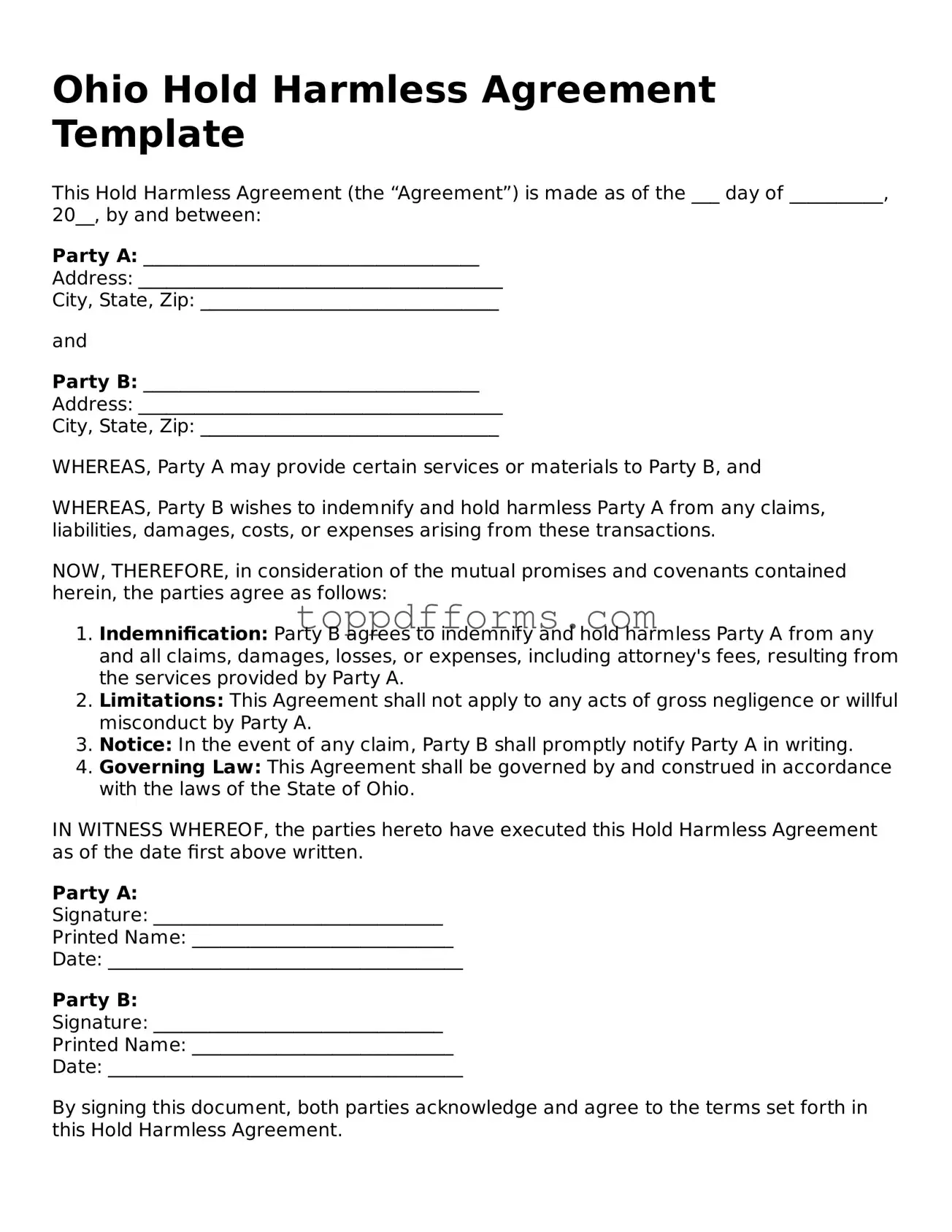What is an Ohio Hold Harmless Agreement?
An Ohio Hold Harmless Agreement is a legal document that protects one party from being held liable for any damages or injuries that may occur during a specific activity or event. It is often used in situations where risks are involved, such as in rental agreements, construction contracts, or special events.
Who typically uses a Hold Harmless Agreement?
This agreement is commonly used by businesses, property owners, and event organizers. It can also be utilized by individuals who want to protect themselves from liability when engaging in activities that could potentially cause harm to others.
What are the key components of a Hold Harmless Agreement?
A typical Hold Harmless Agreement includes the names of the parties involved, a description of the activity or event, and a clear statement of liability. It may also outline the responsibilities of each party and any limitations on liability.
Is a Hold Harmless Agreement legally binding?
Yes, when properly executed, a Hold Harmless Agreement is legally binding in Ohio. However, it is important for both parties to fully understand the terms before signing. Courts may enforce the agreement unless it is deemed unconscionable or against public policy.
Can a Hold Harmless Agreement protect against gross negligence?
Generally, Hold Harmless Agreements do not protect against gross negligence or willful misconduct. If a party acts with extreme carelessness or intentional harm, a court may not enforce the agreement in those circumstances.
How can I ensure my Hold Harmless Agreement is enforceable?
To make your Hold Harmless Agreement enforceable, ensure it is clear, specific, and fair. Both parties should have the opportunity to review the terms and consult legal counsel if needed. Signatures from both parties are essential to validate the agreement.
Do I need a lawyer to draft a Hold Harmless Agreement?
While it is not strictly necessary to hire a lawyer, consulting one can be beneficial. A legal professional can help ensure that the agreement meets all legal requirements and adequately protects your interests.
Can I modify a Hold Harmless Agreement after it has been signed?
Modifying a Hold Harmless Agreement after it has been signed is possible, but both parties must agree to the changes. It is best to document any modifications in writing and have both parties sign the revised agreement.
What happens if a party does not adhere to the Hold Harmless Agreement?
If a party fails to adhere to the terms of the Hold Harmless Agreement, the other party may have grounds to pursue legal action for breach of contract. The specific remedies available will depend on the circumstances and the terms outlined in the agreement.
Where can I find a template for an Ohio Hold Harmless Agreement?
Templates for Hold Harmless Agreements can be found online through legal websites or document services. However, it is recommended to customize any template to fit your specific situation and seek legal advice if necessary.
